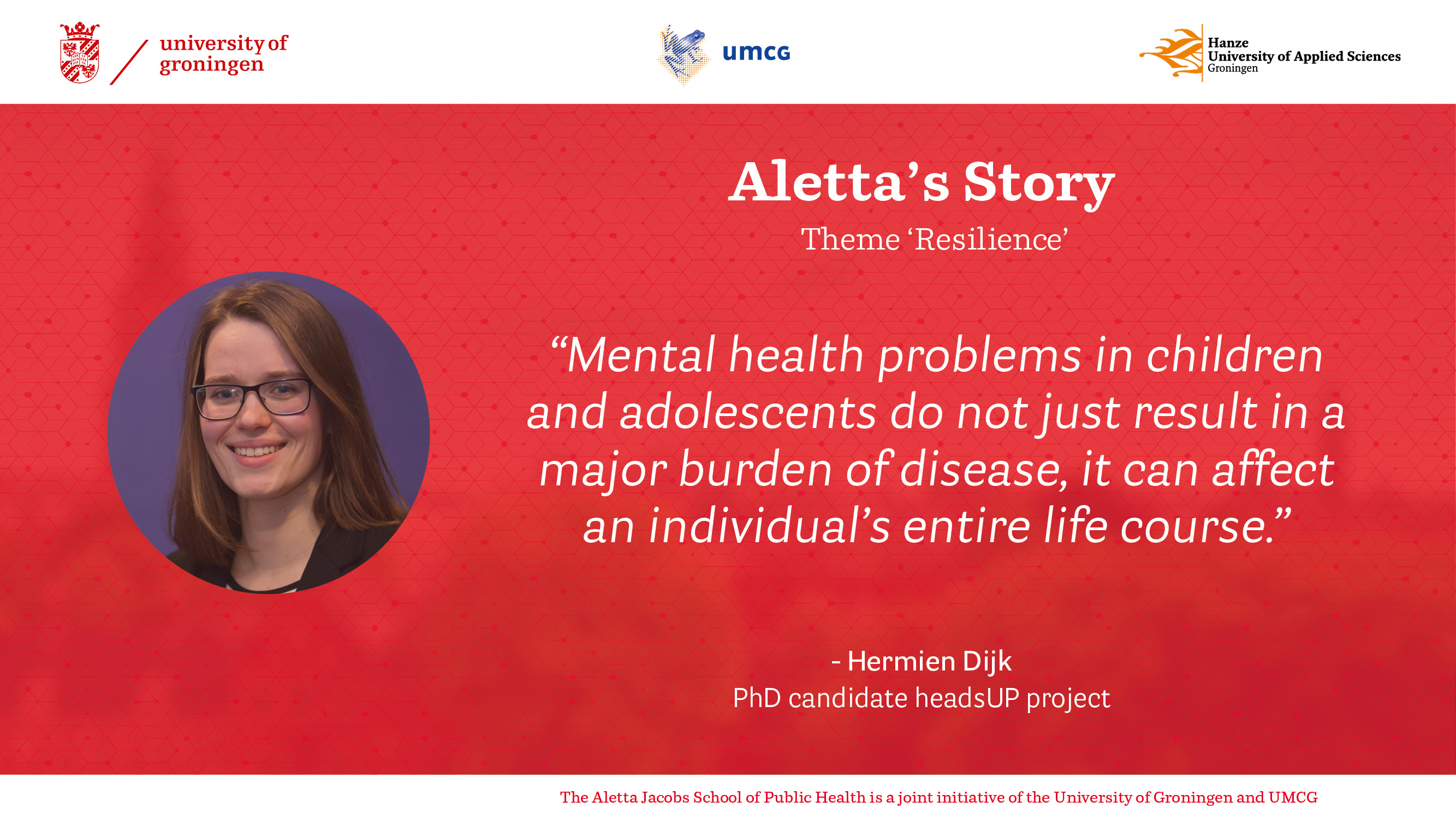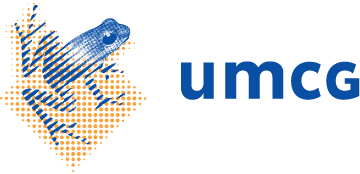Hermien Dijk
Hermien Dijk, PhD candidate headsUP-project, University of Groningen
My sister started studying psychology when I was still in high school. I remember one of her books lying around the house and, before I knew it, I had spent hours reading her psychology texts. When it became time for me to study, I chose economics, which to some might be entirely different. Not to me, however, just like large parts of psychology, economics is about studying human behaviour although the approach might be extremely different. People are sometimes surprised that I study mental health as an economist, but both mental health and economics are all around us in our daily lives. Around 20% of the working-age population is estimated to suffer from a mild to moderate mental disorder and most of these mental disorders start in childhood and adolescence. As a result, for a large number of individuals their mental health might influence their (economic) choices; not just healthcare choices, but also education and labour market choices. In the end, mental health problems in children and adolescents do not just result in a major burden of disease, it can affect an individual’s entire life course. If we can get the right interventions to these young individuals, we help them change their life course for the better. I try to make the difference for these people by focussing on mental health. Instead of my sister’s psychology textbooks, I am now reading my own…
As a PhD student of the headsUP project I investigate the societal costs and benefits of child and adolescent mental healthcare. Besides human behaviour, economics is about optimal allocation of scarce resources and, perhaps unfortunately, healthcare is no exception in terms of scarcity. Once we use resources for one health intervention we cannot use these same resources for another intervention meaning that we have to make choices regarding which interventions to implement. It is in everyone’s best interest that we spend these resources wisely so that we can create the most (mental) health gains, for the individuals that we want to create these gains for. We are currently developing a model with which we can eventually estimate the societal costs and benefits of child and adolescent mental healthcare. By investigating aspects such as the persistence of mental healthcare use and the age-profile of mental health we can fill this model. Eventually, such a model will help stakeholders to make more informed decisions regarding mental health interventions, so that we can truly aim at creating the most (mental) health gains for the individuals that we want to create these gains for. Since the field of public health can be scattered across different faculties, departments and organisations, with each group looking at public health issues from their own background and with their own favoured methodologies, it is important to build bridges between the different islands. In the end, we can all gain from the insights provided by peers with different backgrounds and the Aletta Jacobs School of Public Health allows us to build these bridges.

| Last modified: | 24 May 2019 3.16 p.m. |


